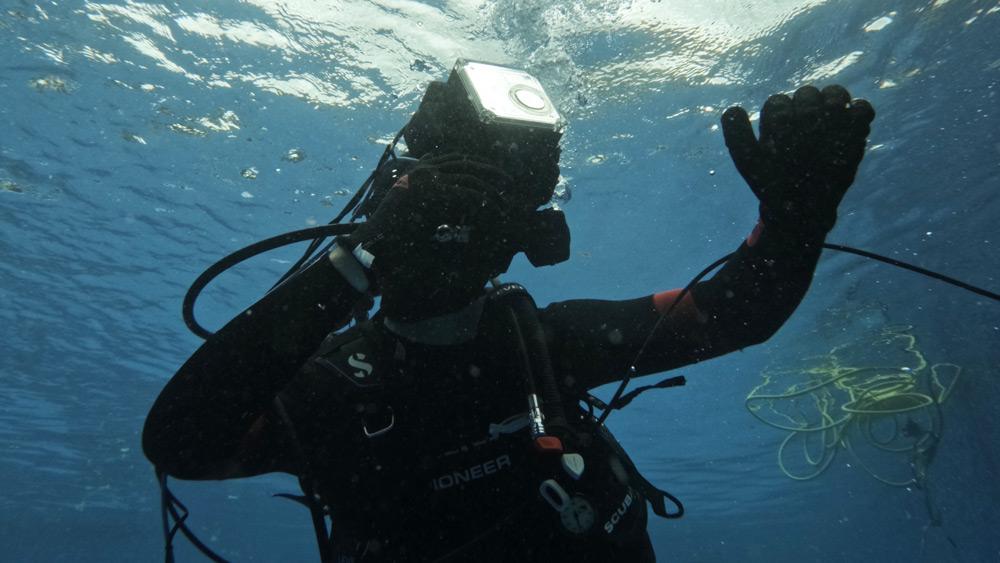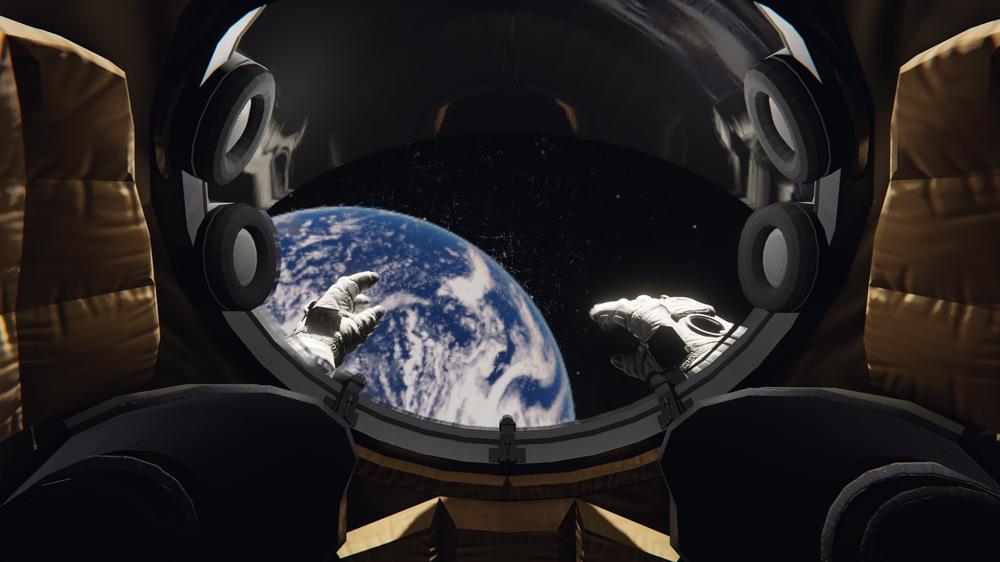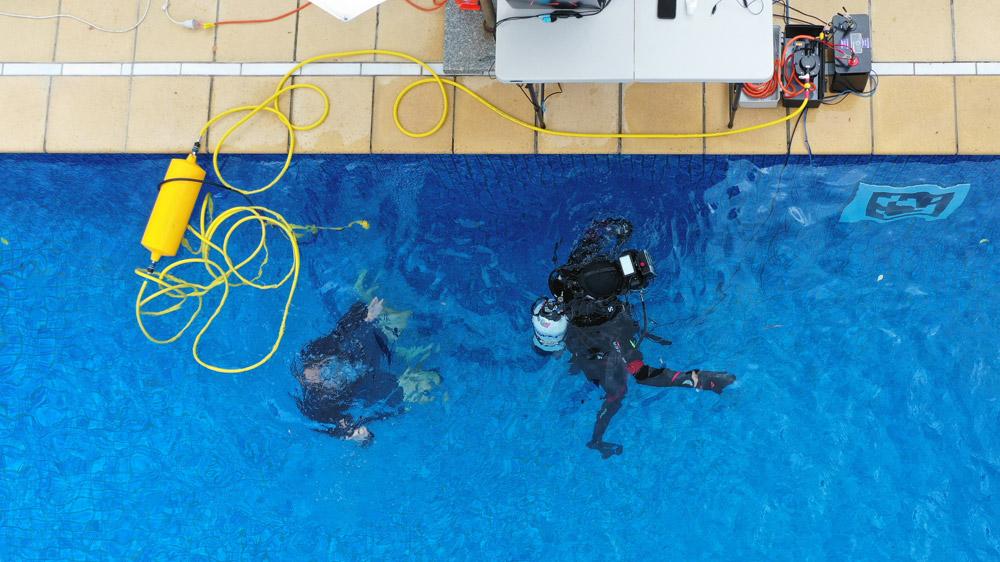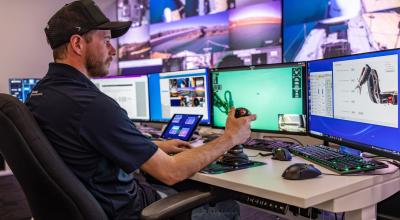Raytracer’s underwater VR headset gives astronauts the impression of a zero-gravity space environment while they train at the bottom of swimming pools.
Astronauts have ways of experiencing weightlessness while remaining in the Earth’s atmosphere – like floating in a neutral buoyancy pool, or nose-diving in an aeroplane – but it’s hard to make them feel like they’re actually in space at the same time. Raytracer has applied its expertise in virtual reality (VR) technology to come up with an ergonomic solution: a world-first immersive virtual headset for trainee astronauts to wear while they’re in the pool.
Animators, 3D artists, and developers with specialist game industry skills have created detailed habitats to surround the headset user, featuring satellites, space stations, and the Earth. Like a video game, the system enables multiple headset users to train together in the same simulation – even from different swimming pools around the world – and the digital platform makes training easily measurable and repeatable.
Beyond private space companies and government space agencies, the Titan Lake technology also has potential Earth-based uses in training for commercial divers, police search and rescue teams, and more.

Titan Lake is a game-changing technology for human spaceflight training. Our system can provide faster and cheaper training options for astronauts to train a wide range of tasks – not only for ISS, but also for a number of new space stations being developed, as well as NASA’s flagship Artemis program.
~ Peter Clowes, Director and Co-Founder, Raytracer

Technology features
- World-first underwater virtual reality headset tracking with six degrees of freedom.
- Automated buoyancy control.
- Multi-user training scenarios.
- Performance data capture and analytics.
- Hand and tool tracking in development.

Project highlights
- Agency International Space Investment Initiative grant awarded to support collaborative development work.
- Developed key international partnerships to further develop the system.
- Several Memoranda of Understanding with private space training organisations to install Titan Lake at their campus facilities.

Industry Showcase
Australian space innovations making an impact
